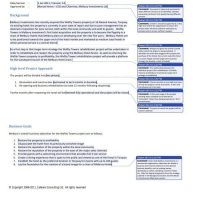Mastering the Art of Negotiation: How to Secure Lower Prices and Bonus Items from Sellers
In a world driven by commerce, negotiation is both an art and a science—a delicate dance where the stakes often transcend mere dollars and cents. Picture a marketplace bustling with energy, where shoppers and sellers engage in a complex interplay of persuasion, strategy, and instinct. While haggling might conjure images of vibrant street bazaars, the principles of negotiation apply universally, from upscale boutiques to online marketplaces. This article is your guide to navigating these nuanced waters, equipping you with the skills to not only lower prices but also unlock those coveted bonus items that can enhance your purchases. Whether you consider yourself a seasoned negotiator or a novice wary of confrontation, join us as we explore techniques that can transform your shopping experience into a win-win scenario for all parties involved. Prepare to sharpen your negotiating prowess and approach your next purchase with confidence!
Understanding Buyer Psychology and Seller Strategies
Understanding the dynamics of buyer psychology is crucial for anyone looking to negotiate successfully. Buyers often approach a purchase with a blend of emotions and logic, which can heavily influence their decisions. Factors such as **perceived value**, **social proof**, and **urgency** can sway a buyer’s willingness to spend. Sellers, aware of these psychological triggers, typically employ strategies that cater to these motivations. For instance, demonstrating how a product fulfills an emotional need or showcasing testimonials can enhance a buyer’s sense of confidence in a purchase. By grasping these elements, you can better position yourself as a knowledgeable negotiator who can exploit these psychological nuances when engaging sellers.
On the flip side, sellers deploy various strategies to maintain their pricing power while still appealing to buyers. Common tactics include **anchoring**, where sellers present a higher initial price to make subsequent offers seem more attractive, and **active listening**, which allows them to tailor their pitch to the buyer’s needs. Sellers also often create a sense of **scarcity**—by highlighting that limited stock is available or that a sale will end soon—to instill a sense of urgency that prompts immediate action from buyers. Below is a simple representation of key seller strategies:
| Strategy | Description |
|---|---|
| Anchoring | Setting a high starting price to make discounts more appealing. |
| Active Listening | Understanding buyer needs to tailor offers effectively. |
| Scarcity | Creating urgency to prompt quicker buyer decisions. |
Crafting Your Approach: Techniques for Effective Negotiation
Effective negotiation requires a strategic mindset and an understanding of both your own goals and those of the seller. To start, establish clear objectives before entering the negotiation arena. Knowing what you want—from a specific price to additional bonuses—will empower you to assertively communicate your needs. Consider employing active listening techniques; this not only shows respect but also helps you gather valuable insights about the seller’s motivations and constraints. In addition, employ the art of silence; pausing after making a proposal can create space for the seller to consider your offer and potentially make concessions.
Moreover, building rapport with the seller can significantly enhance the negotiation process. Create a connection by identifying shared interests or experiences, as this can transform a transactional interaction into a collaborative conversation. Utilizing persuasive language can also tip the scales in your favor. Use phrases such as “I understand that…” or “It would really help if…” These phrases frame your requests as beneficial for both parties. It’s equally crucial to be prepared with data and examples that support your case. Consider the following table showcasing negotiation tactics and their expected outcomes:
| Tactic | Expected Outcome |
|---|---|
| Building Rapport | Improved trust and communication |
| Active Listening | Better understanding of seller motives |
| Assertive Proposals | Clarity in your needs and limits |
| Data-Driven Arguments | Stronger position and credibility |
Leveraging Persuasion: Securing Extras and Lower Prices
To effectively persuade sellers during negotiations, understanding their motivations can be your strongest asset. Begin by establishing a rapport; this approach encourages sellers to feel more comfortable and open to accommodating your requests. Engage in active listening, which allows you to gauge their pain points and adjust your strategy accordingly. You can employ various tactics such as:
- Emphasizing Value: Highlight how your request for extras or lower prices can mutually benefit both parties.
- Timing is Key: Look for strategic moments to present your requests, often after the seller has expressed excitement about their product.
- Be Patient: Avoid rushing the conversation; taking your time may lead sellers to reconsider their initial offers.
In addition to psychological techniques, consider presenting data that supports your case. A well-structured table comparing market prices can illustrate your point effectively, putting pressure on the seller to accommodate your terms. For instance:
| Item | Market Price | Your Offer |
|---|---|---|
| Product A | $100 | $85 |
| Product B | $150 | $120 |
| Product C | $200 | $160 |
Utilizing such tools not only legitimizes your request but also demonstrates your preparedness and seriousness in the negotiation. By coupling persuasive techniques with solid data, you’re more likely to secure favorable terms that bring down costs and potentially add value through extras.
The Way Forward
mastering the art of negotiation is not just about haggling for lower prices or securing bonus items; it’s a skill that empowers you to create win-win scenarios in every deal you encounter. By harnessing the techniques outlined in this article, you can approach any negotiation with confidence, clarity, and a strategic mindset. Remember, successful negotiations are built on rapport, understanding, and a willingness to find common ground. As you refine your negotiation skills, you’ll discover that each conversation presents an opportunity—not just for better prices, but for lasting relationships and mutual respect. So go forth, armed with your newfound knowledge, and negotiate your way to better deals and fruitful partnerships. The art of negotiation awaits; all you have to do is seize the moment.


















